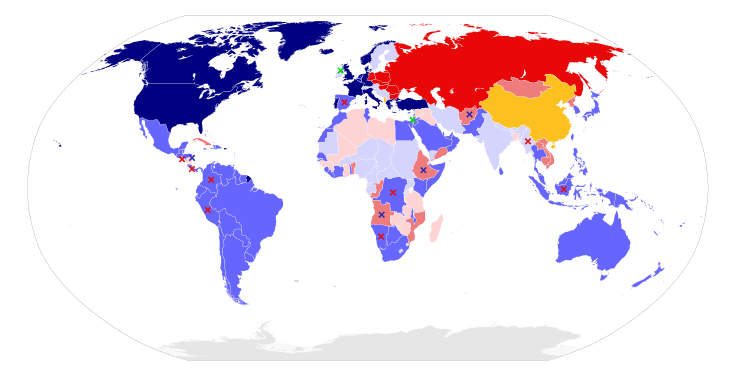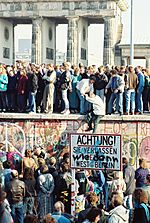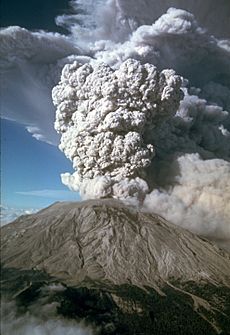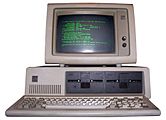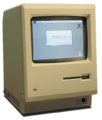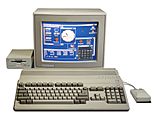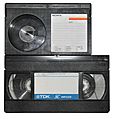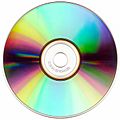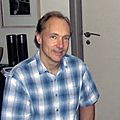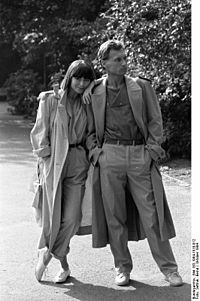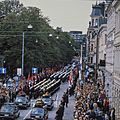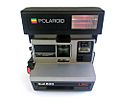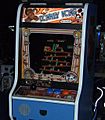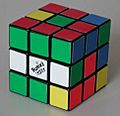1980s facts for kids
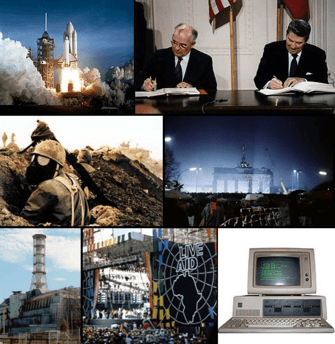
| Millennium: | 2nd millennium |
| Centuries: | 19th century – 20th century – 21st century |
| Decades: | 1950s 1960s 1970s – 1980s – 1990s 2000s 2010s |
| Years: | 1980 1981 1982 1983 1984 1985 1986 1987 1988 1989 |
| Categories: | Births – Deaths – Architecture Establishments – Disestablishments |
The 1980s (pronounced "nineteen-eighties") was a decade that started on January 1, 1980, and ended on December 31, 1989. People often call it "the '80s" or "the Eighties".
This decade saw a big shift towards conservatism and free market ideas in many countries. Technology also changed a lot of things. Many large companies moved their factories to countries like Thailand, Mexico, South Korea, Taiwan, and China. Japan and West Germany experienced strong economic growth. The AIDS epidemic was first recognized in the 1980s. Also, scientists and politicians became more aware of Global warming.
The United Kingdom and the United States adopted new economic policies. This led to changes in global trade. The last part of the Cold War began with high tensions between the US and the Soviet Union. The world came very close to nuclear war. However, the second half of the decade saw these tensions ease. This eventually led to the end of Soviet communism.
Many developing countries faced tough economic times. They had debt problems and needed help from organizations like the International Monetary Fund (IMF). For example, Ethiopia suffered from a terrible famine in the mid-1980s. People worldwide helped by raising money, like through the Live Aid concert in 1985.
Many conflicts happened around the world. These included the Iran–Iraq War and the Soviet–Afghan War. In the mid-1980s, people in Eastern Europe started wanting more freedom. This led to changes like Mikhail Gorbachev's "glasnost" (openness) and "perestroika" (restructuring) in the Soviet Union. These changes reduced the power of the Communist Party.
By 1989, many communist governments in Eastern Europe began to fall. A huge event was the fall of the Berlin Wall. This signaled a big change in world politics. The Cold War officially ended in the early 1990s. This happened with the reunification of Germany and the breakup of the USSR.
The 1980s also brought major advances in science. Genetic technology made it possible to modify human genes. The first "designer babies" were created in a lab. Gestational surrogacy also became possible. This meant a woman could be a biological mother without being pregnant herself.
The world's population grew a lot in the 1980s. It was one of the biggest population booms in history. Growth was especially fast in parts of Africa, the Middle East, and South Asia.
The global internet started to take shape in universities. Many other computer networks also appeared. By 1989, the Internet was a worldwide system. Tim Berners-Lee developed the idea of the World Wide Web. Television viewing also became very common in many countries.
Video game consoles like the Atari Video Computer System were popular early in the decade. The game Space Invaders was a huge hit. After the video game crash of 1983, the Nintendo Entertainment System brought the console market back. The Game Boy handheld launched in 1989. Super Mario Bros. and Tetris were top-selling games. Pac-Man was the highest-earning arcade game. Home computers also became common. The 1981 IBM PC led to many similar computers. The 1984 Macintosh made graphical user interfaces popular.
Contents
Major World Events of the 1980s
International Conflicts and Wars
The 1980s saw several important conflicts:
- The Cold War (1947–1991) continued.
- The Soviet–Afghan War (1979–1989) was fought between the Soviet Union and Afghan fighters. The US and other countries supported the Afghan fighters.
- The Invasion of Grenada (1983) was a US-led invasion. It happened after a military coup in Grenada.
- The Salvadoran Civil War (1980–1992) was part of the Cold War. About 70,000 people died.
- The Falklands War (1982) happened when Argentina invaded the Falkland Islands. The United Kingdom fought to get them back and won.
- The Arab–Israeli conflict continued.
- The 1982 Lebanon War involved Israel invading southern Lebanon. This was in response to attacks on northern Israel.
- The Iran–Iraq War (1980–1988) caused huge casualties on both sides. Iraq was accused of using chemical weapons.
- The United States launched an aerial attack on Libya in 1986. This was in response to Libya supporting terrorism.
- The South African Border War ended in 1989. This conflict involved South Africa, Angola, Namibia, and Zambia.
- The United States invasion of Panama in December 1989 removed Manuel Noriega from power.
Key Political Changes in the 1980s
Political Changes in the Americas
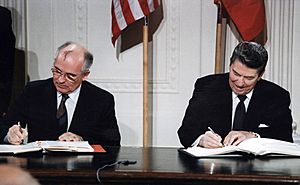
- Ronald Reagan became US president in 1980. He took a strong stance against the Soviet Union. He also demanded the Berlin Wall be taken down.
- The Reagan Administration increased efforts in the War on Drugs.
- In 1981, President Reagan fired over 11,000 striking air traffic controllers. They had ignored an order to return to work.
- In Quebec, Canada, a referendum was held in 1980. People voted on whether Quebec should separate from Canada. The "no" side won.
- Many military dictatorships in Latin America ended. Countries like Argentina (1983) and Brazil (1985) became democracies.
Political Changes in Europe
- The European Community grew. Greece joined in 1981, and Spain and Portugal in 1986.
- In 1983, Bettino Craxi became Italy's first socialist Prime Minister. He was in power for a long time.
- Many communist countries in Eastern Europe saw big political changes. People wanted more freedom and democracy.
- The fall of communism was mostly peaceful. However, in Romania, leader Nicolae Ceaușescu was violently overthrown and executed in December 1989.
- In Yugoslavia, after the death of leader Josip Broz Tito in 1980, ethnic nationalism grew. This led to tensions between different groups.
- Mikhail Gorbachev became the leader of the Soviet Union in 1985. He started major reforms to the government. He also worked with the US to reduce tensions and end the Cold War.
- During the Revolutions of 1989, most communist governments in Eastern Europe collapsed. The fall of the Berlin Wall in 1989 led to German reunification in 1990.
- The United Kingdom was led by Prime Minister Margaret Thatcher. She was the first female leader of a Western country. She introduced major economic reforms.
- A big strike by coal miners happened in the UK (1984–85). It was one of the most difficult industrial disputes in British history.
- Soviet leaders Yuri Andropov and Konstantin Chernenko died shortly after taking power.
Political Changes in Asia
- In the Philippines, President Ferdinand Marcos left power in 1986. Corazon Aquino became president after the "People Power Revolution".
- South Korea and Taiwan became more democratic. South Korea hosted the 1988 Summer Olympics, which boosted its international standing.
Natural Disasters of the 1980s
- Mount St. Helens erupted in Washington, US, on May 18, 1980. This killed 57 people.
- The 1989 Loma Prieta earthquake hit the San Francisco Bay Area in 1989. It caused a lot of damage and killed 65 people.
- The 1988–89 North American drought was the worst drought in the US in many years. It caused billions of dollars in damage.
- Several powerful hurricanes hit the Atlantic. These included Hurricane Allen (1980) and Hurricane Hugo (1989).
- Other major natural disasters included the 1985 Mexico City earthquake and the 1988 Armenian earthquake.
Science and Technology in the 1980s
Advances in Medicine and Biology
The 1980s brought many new discoveries in medicine and biology.
- The first surrogate pregnancy of an unrelated child happened in 1986.
- The first genetically modified crops were grown in China in 1988.
- Gene therapy techniques were developed. This made gene tagging and gene therapy possible for humans.
Electronics and Computers
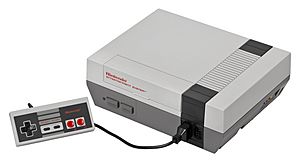
Video games became hugely popular in the 1980s.
- Pac-Man was introduced in 1980 and became one of the most popular games ever.
- The video game crash of 1983 hurt the industry. But Nintendo revived it with the Nintendo Entertainment System (NES).
- Donkey Kong (1981) was a big hit for Nintendo.
- Games like Super Mario Bros. and The Legend of Zelda became very successful.
- The personal computer grew rapidly. The IBM PC, launched in 1981, became very popular for work.
- The Commodore 64 was the best-selling computer model of all time.
- The Macintosh, released in 1984, made graphical user interfaces (GUIs) popular.
- Walkman players and boomboxes became very popular.
- VCRs and video rental stores became common. VHS became the main video format.
- Synthesizers and Musical Instrument Digital Interface (MIDI) made electronic music easier to create.
- High definition television (HDTV) was first developed.
- The Hayes Smartmodem helped BBS systems become popular. These were early ways to connect computers.
-
The ColecoVision video game System.
-
Atari 7800 System (PAL system with Joypad controller).
-
Mega Drive, known as the Genesis in North America, succeeded the Master System.
-
IBM PC (model 5150), the first DOS-compatible PC was released in 1981.
-
Commodore 64, the best-selling computer model of all time.
-
The Macintosh 128K, the first commercially successful personal computer to use a graphical user interface.
-
In 1984, the Motorola DynaTAC 8000X became the first commercially available mobile phone model.
-
The fax machine became widely used.
-
VHS became the leading standard in home video systems.
-
In 1981, Microsoft introduced the MS-DOS operating system.
-
The most basic CD was first introduced in October 1982 for digital audio.
-
In 1989, Tim Berners-Lee first proposed the World Wide Web.
Space Exploration

American space probes continued their journeys.
- The Voyager probes flew past Saturn (1980–1981). Voyager 2 reached Uranus (1986) and Neptune (1989).
- Halley's Comet returned in 1986. Several probes from the Soviet Union, Japan, and Europe studied it.
- American space flights with astronauts restarted in 1981 with the Space Shuttle Columbia.
- The tragic loss of the Challenger in 1986 killed seven astronauts. This led to major safety improvements. Flights resumed in 1988.
- The Soviet space program continued well. The Salyut 7 space station was launched in 1982. Then came Mir in 1986, which operated for over a decade.
Automobiles
The American car industry faced challenges in the early 1980s.
- Japanese car makers became a major presence. They started building cars in the US.
- Cars became smaller and more fuel-efficient. Designs became more aerodynamic.
- Chrysler introduced its new front-wheel drive "K-cars" in 1981.
- The DMC DeLorean sports car began production in 1981. It later became famous as the time machine in the Back to the Future movies.
- Turbochargers were used to boost small car performance. Fuel injection started replacing carburetors. Front-wheel drive became common.
Economics in the 1980s
- The early 1980s had a severe global economic recession.
- Inflation in the US went down significantly.
- Finland's economy grew very fast.
- Developing countries faced debt crises. They relied on aid from the International Monetary Fund.
- A return to free market economic ideas happened in developed countries. This led to economic growth in the mid-to-late 1980s.
- Brazil and Mexico suffered from a debt crisis.
- The Canada–United States Free Trade Agreement was signed in 1989. This strengthened economic ties between the two countries.
- In the Soviet Union, economic reforms were started by Mikhail Gorbachev.
- China, under Deng Xiaoping, began major economic reforms. This opened its economy to the West.
- The Solidarity movement in Poland pushed for political freedom and democracy.
- The financial world and stock market became very popular. Figures like Donald Trump became symbols of the decade.
- The "Black Monday" stock market crash happened on October 19, 1987. Stock markets around the world dropped sharply.
- For the first time, trade across the Pacific (with Asia and Latin America) equaled trade across the Atlantic (with Europe and Canada). This showed America's growing economic power.
Popular Culture of the 1980s
Music in the 1980s
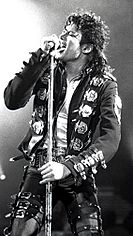
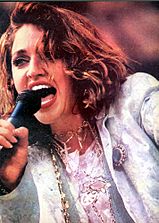
- MTV launched in the US in 1981. Music videos became very important for the music industry.
- Pop artists like Michael Jackson, Whitney Houston, Prince, and Madonna became huge stars.
- New wave and synthpop were popular music styles.
- New technologies like synthesizers and drum machines changed music production.
- Michael Jackson was a major icon. His 1982 album Thriller became the best-selling album of all time. His 1987 album Bad also sold millions. He won many awards and was named "Artist of the Decade."
- Prince was another very successful artist. His album Purple Rain (1984) made him a superstar.
- Madonna and Whitney Houston were groundbreaking female artists.
- Hard rock, heavy metal, and glam metal were very popular. Bands like Mötley Crüe, Guns N' Roses, and Metallica rose to fame.
- "Weird Al" Yankovic became known for his song parodies.
- By 1989, hip hop music gained a lot of recognition. Artists like the Beastie Boys and Run-D.M.C. were successful.
- Country music also became more popular with younger audiences.
- Techno and house music styles of electronic dance music emerged.
- Punk rock continued to evolve. Hardcore punk and Straight Edge movements began. College rock also grew in popularity.
- The grunge genre started with bands like Soundgarden and Nirvana.
- Many famous musicians died in the 1980s. These included John Lennon (shot in 1980) and Bob Marley (died in 1981).
- The Band Aid supergroup formed in 1984 to help Ethiopia. The Live Aid concert in 1985 raised money for famine relief.
Film in the 1980s

- Popular films included E.T. the Extra-Terrestrial, Return of the Jedi, and Back to the Future.
- The 1980s saw a return to studio-driven films. "high concept" films became popular. These movies had simple plots that were easy to market.
- The modern Hollywood blockbuster became the most popular film type.
- The The Criterion Collection was started in 1984. It set new standards for home video releases.
- The "teen flick" genre had its golden age. Films like The Breakfast Club and Ferris Bueller's Day Off were very popular. They launched the careers of many young actors.
- Horror films were popular. Franchises like Friday the 13th and A Nightmare on Elm Street began.
- Action film franchises also started. These included Indiana Jones, Die Hard, and Rambo. These films made stars like Arnold Schwarzenegger and Bruce Willis famous.
- Five James bond films were released.
- Animated films also saw important releases. Don Bluth directed films like An American Tail. Disney recovered with films like The Little Mermaid.
- Japanese anime films became more known. Hayao Miyazaki's films led to the creation of Studio Ghibli.
Television in the 1980s
- MTV launched in 1981. It greatly influenced the music industry and popular culture.
- Cable television became much more popular and accessible.
- Prime-time soap operas like Dallas and Dynasty were very popular.
- Sitcoms like The Cosby Show, Cheers, and Full House were big hits.
- Talk shows expanded in popularity. Hosts like Johnny Carson and David Letterman were widely watched.
- Popular animated shows included The Smurfs, The Transformers, and Teenage Mutant Ninja Turtles. The earliest Simpsons shorts also aired.
Sports in the 1980s
- The 1980 Summer Olympics in Moscow were boycotted by the US and other countries. This was in protest of the Soviet invasion of Afghanistan.
- The 1980 Winter Olympics saw the "Miracle on Ice". The US hockey team defeated the Soviet team and won gold.
- The New York Islanders won the Stanley Cup four years in a row (1980–1983).
- The 1984 Winter Olympics were held in Sarajevo, Yugoslavia.
- The 1984 Summer Olympics in Los Angeles were boycotted by the Soviet Union.
- The Jamaica national bobsled team surprised everyone at the 1988 Winter Olympics.
- Wayne Gretzky became a huge star in hockey. His team, the Edmonton Oilers, won four Stanley Cups.
- Michael Jordan became a major basketball icon. He brought a surge in popularity for the sport.
- Magic Johnson and Larry Bird were the most popular NBA players. They had a famous rivalry.
- Mike Tyson became the youngest boxing Heavyweight Champion in history at age 20.
- WrestleMania events began in the WWF.
- Italy won the 1982 FIFA World Cup. Argentina won in 1986, with Diego Maradona scoring the "Goal of the Century".
- In American football, the San Francisco 49ers won four Super Bowls.
Video Gaming in the 1980s
- Popular video games included Pac-Man, Super Mario Bros., The Legend of Zelda, and Tetris.
- Pac-Man was the first game to become widely popular in mainstream culture.
- Handheld electronic LCD games were introduced.
- The Commodore 64 and ZX Spectrum were popular gaming computers.
- Nintendo released its Famicom in the US as the Nintendo Entertainment System (NES) in 1985. It was a huge success.
- Sega released its 16-bit console, the Mega Drive/Genesis, in 1988.
- In 1989, Nintendo released the Game Boy, a handheld console.
Fashion in the 1980s
Fashion in the 1980s was often very bold and colorful.
- Hair trends included the perm, the mullet, and big hair.
- Popular clothing included shoulder pads, jean jackets, leather pants, and acid-washed jeans.
- Leggings and leg warmers became popular, especially after the film Flashdance.
- Miniskirts returned to fashion.
- Makeup was bright and strong, with lots of blush and eyeliner.
- Other trends included Ray-Ban Aviator sunglasses and the Rubik's Cube.
- Girls and women wore jelly shoes and large crucifix necklaces, inspired by Madonna.
Images for kids
-
Invasion of Grenada, October 1983.
-
Former president of Finland from 1956 to 1982. Funeral cortege of Urho Kekkonen in Helsinki, 1986.
-
TV shows like Full House were popular in the 1980s.
-
MTV was launched in 1981.
-
Technological advancements like the Commodore 64 were popular in the 1980s.
-
Polaroid-branded cameras were popular.
-
He-Man and the Masters of the Universe was a popular cartoon.
-
Cassette tapes were popular for music.
-
Arcade games like Pac-Man were popular.
-
Six Olympic Games were held in the 1980s.
-
1980s teen films like Back to the Future were popular.
-
US President Ronald Reagan met Michael Jackson in 1984.
-
Live Aid concert at Philadelphia's JFK Stadium in 1985.
-
The popular 1980s arcade game Donkey Kong.
-
Game & Watch was a popular mobile game.
-
Tom Bailey of the Thompson Twins in 1986 with trendy Big hair.
-
Ray-Ban sunglasses.
-
Rubik's Cube was a popular toy.
-
Globally popular musician and actress Cher was a prominent fashion icon.
-
In the 1980s, Care Bears were popular for children.
-
U2.
See also
 In Spanish: Años 1980 para niños
In Spanish: Años 1980 para niños
- 1980s in fashion
- 1980s in music
- 1980s in television
- 1980s in video gaming
- 1980s in literature
- Hairstyles in the 1980s
Timeline of the 1980s
The following articles list important events for each year of the decade:
1980 • 1981 • 1982 • 1983 • 1984 • 1985 • 1986 • 1987 • 1988 • 1989


